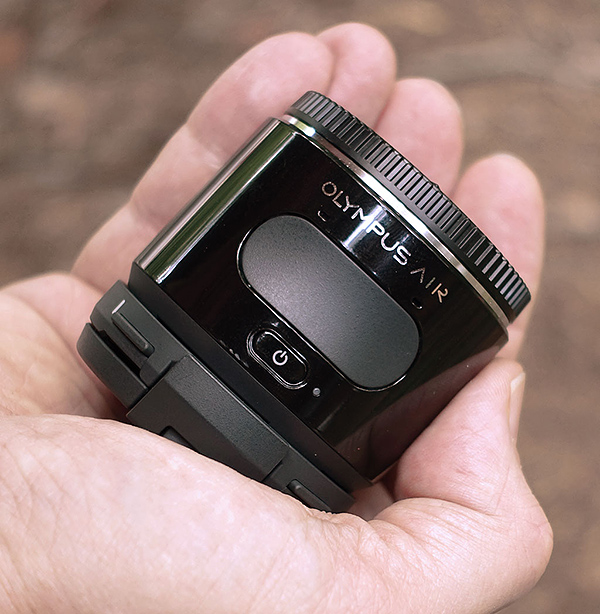Can Olympus thrive after the sale? A “photo brain trust” of top editors chews it over
posted Thursday, June 25, 2020 at 6:05 PM EST
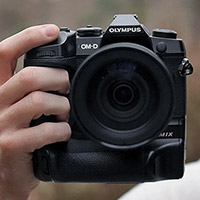
Olympus announced on Wednesday that it would sell off its imaging division to Japan Industrial Partners, a private investment firm. You can catch the coverage on many sites. We got together a few of the photo folks from Madavor Media, including Imaging Resource founder Dave Etchells, Imaging Resource managing editor Dave Pardue, Imaging Resource senior editor William Brawley, Outdoor Photographer and Digital Photo editorial director Wes Pitts and Digital PhotoPro editor Terry Sullivan to ask one of the looming questions:
"What Are The Odds Olympus Can Thrive After This Sale?"
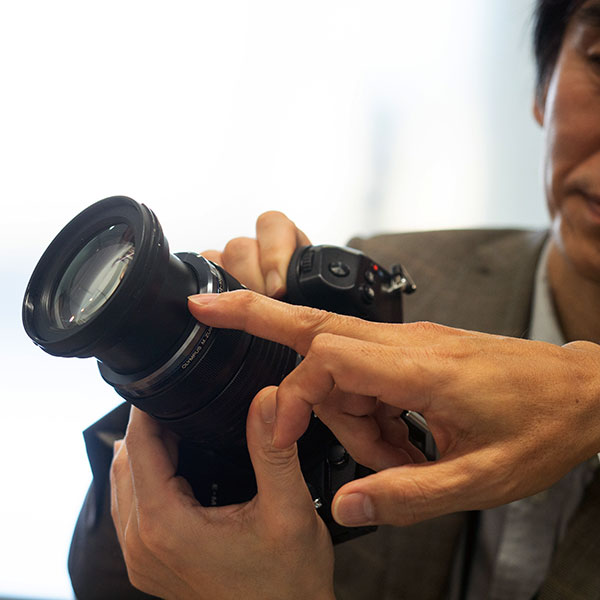
Wes Pitts (Outdoor Photographer and Digital Photo editorial director): It could be a good thing in the long run. Olympus has struggled for a while now. Though it's not a totally analogous circumstance, this "carve-out" reminds me of the sale of Konica Minolta's image assets to Sony. That move eventually led to Sony completely disrupting the traditional DSLR market and emerging as the leader in mirrorless. Certainly, Sony had a lot to bring to that table technology-wise that a private equity firm like Japan Industrial Partners presumably won't, but lots of respected brands get sold to investment firms and live on. If NewCo cleans up its product lines and focuses on the potentially profitable ones (notice the emphasis in the press release on OM-D and Zuiko), things could turn out well. There is demand for the advantages of a very lightweight, compact mirrorless camera system, and Olympus is uniquely positioned in that space.
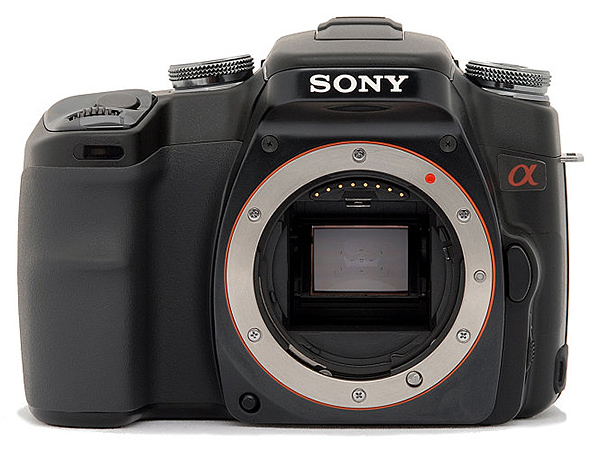
Dave Etchells (Imaging Resource founder): I don't know a lot about JIP; they seem like a fairly generic private equity firm, with rather scattershot investments. They were formed for this sort of "carve-out" deal, taking parts of existing companies independent. My concern is that the carve-outs that they do are just that: They're not becoming part of something bigger, but rather are just chopped down to whatever will make them profitable as standalone businesses.
I do think there's potential for the Olympus Imaging line to become profitable if they trim the deadwood from their lineup, and I think they can continue to manufacture their existing and near-term portfolio, but I worry a bit about their ability to support all the R&D Olympus has traditionally invested in things like cutting-edge IS and their truly excellent optical designs.
William Brawley (Imaging Resource senior editor): Good thinking, Wes! I sure hope this new "Olympus Imaging company" does indeed follow a similar Konica Minolta-Sony path rather than morph/devolve into some sort of weird licensing thing like what happened with the Polaroid and Kodak brands. JIP also took over Sony's VAIO PC brand, and I'm not sure how that's all going financially. Initially, they sold JIP-owned VAIO laptops in Japan only, then expanded back into other markets, but as of right now there are only two models of VAIO laptops available in the U.S. And I don't hear much about VAIO these days. :-/
Dave E.: Yeah, I hope that this deal doesn't mean that Olympus will contract to just the Japanese or Asian market the way VAIO seems to have. I'm also wondering how this deal will affect the rest of Olympus Corporation. In multiple interviews I've done across many years, Olympus execs always pointed to the Imaging Division as being a technology driver for their other, more profitable products. Will there be some sort of R&D relationship between NewCo and Olympus Corp, to continue to provide that? If so, will that help NewCo be profitable? There are definitely more questions than answers at this point.
Dave Pardue (Imaging Resource managing editor): The move to a new factory seemed to have slowed their E-M5 III production quite a bit a few years back, and when they finally came to the fold with that model, and then the E-M1 III, the world situation happened and seemed to thwart their efforts. My belief is that their products are simply too good and too sound to go away. I believe the chances of their product line surviving into the future are better than 50 percent, and I for one would be very happy if they do.
William: Following on the JIP/VAIO thing... surely they wouldn't just license out the manufacturing of cameras or lenses some random third-party company and essentially just end up slapping the Olympus name on underwhelming cameras at some point in the future? I assume JIP is taking over ownership of the Olympus factory/factories in Vietnam?
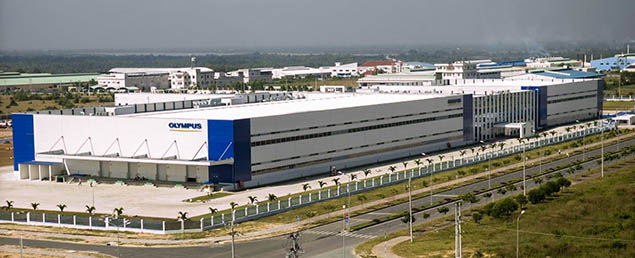
Dave E.: Yeah, the manufacturing is an interesting part of the equation. My guess is that they'll contract with Olympus to do manufacturing for them. AFAIK, the Vietnam factory was their main facility for medical device manufacturing before they moved camera production there, so it has a lot of utility for Olympus Corp. overall. I don't think they'd transfer ownership of it to JIP, but it'd make sense for JIP to either contract the manufacturing back to Olympus or lease part of the space there from them.
Terry Sullivan (Digital PhotoPro editor): In an era of very intense marketing, even companies like Nikon are struggling. I think Olympus still needs to compete on either offering extremely low price points or produce some radical new product designs/capabilities, all the while keeping the quality they've always had, in order to attract buyers, particularly younger photographers/videographers. And also, it's essential to go after the video content creators, the way Sony and Panasonic have just done, with the new ZV-1 and new G100. Of course, I do hope they can keep at it, and stay in the camera market. But I think they need to have a radical change in thinking.
Dave E.: I agree with Dave P. that there is absolutely a place for Olympus gear in the marketplace. For people that want lightweight, compact gear with excellent IS and that can really stand up to the elements, there just isn't anything else on the market that meets those needs the way Olympus does. I personally like their gear a lot, and it's my go-to choice when I'm traveling: The E-M5 III paired with their 12-100mm f/4 lens is just a phenomenal combination, and even their 12-200mm variable-aperture lens is surprisingly good for a long-ratio zoom.
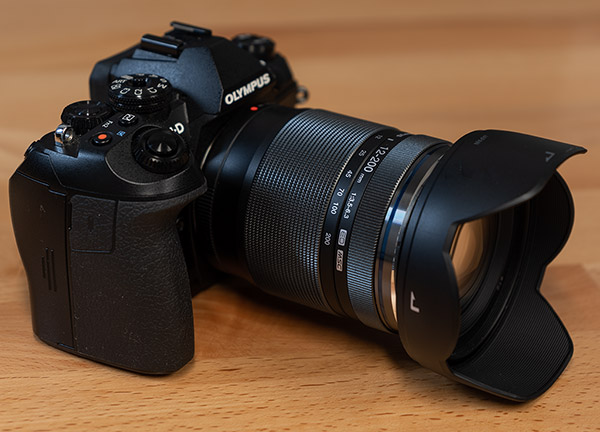
I think Olympus has had a hard time communicating how significant their advantages are for a lot of photographers. Sony was very successful in convincing people that everyone needed a full-frame camera, and I think I speak for a lot of people in saying that that just isn't the case for the vast majority of what I do. (That'd be the topic for another whole loooong discussion!)
I like the fact that if I want to travel in "vacation mode," I can slap the 12-100mm (24-200mm equivalent) onto an E-M5 III body and go anywhere and shoot pretty much anything. Weather is totally a non-issue. Mud or salt spray? Just hose it off. The IS is extraordinary; they clearly lead the market, at least at the extremes of performance, when you pair something like the 300 f/4 with the E-M1X body, to get 7.5 stops. (Speaking of the 300 f/4, that's hands-down my favorite tele, on any platform.) If I want to be ready for anything, I can pack a body or two and 3 or 4 lenses into an amazingly small, lightweight bundle.
This is an area I don't think people really appreciate until they've actually lugged around a full-frame body and collection of lenses on a trip or two. And even if they have, they probably don't appreciate just how huge a difference there is when you look at the system as a whole, vs just numbers on spec sheets, or even holding just a body and lens on their own.
Terry: Olympus is capable of innovative thinking: At the time that Sony was introducing its QX "lens barrel" cameras to be used with your smartphone, Olympus introduced a similar line with its Olympus Air accessory. I really liked some of how they approached it, although they needed an Apple-like interface ... and that's just ALWAYS been a problem with camera companies: Not thinking through the GUI and ease of use. For example, I still see menus on cameras like almost look like when I left Nikon in 2005. That's "hard of use" features.
Dave E.: I think Terry touched on a core of the problem. I don't see any way that they could survive by competing on price, when you can get a cheap DSLR with kit lens for not much over $300 these days. That's certainly a cheaply made and cheap-feeling camera at that price, and forget about weather resistance, but Olympus' problem has always been about getting people to recognize the value of their build quality, weather resistance, etc.
And yeah, while they can shoot pretty good video and their dual IS is great for handheld video shooting, Olympus has always been much more of a stills-oriented company—and a lot of the younger crowd is about video, almost to the exclusion of stills.
Tying my point about their key advantages back to price, the level of weather sealing they do, and the higher-quality gyros they use for there is, and just generally high-build quality all cost more money in manufacturing, so the bodies are more expensive than some other brands. IMHO, it's not a large premium to pay, given the quality and ruggedness you get, but a lot of buyers are just looking at price when they're comparing two cameras against each other. I think if Olympus were just able to get the awareness of what they're truly offering into more people's heads, they could sell a whole lot more cameras and lenses than they have.
And Terry, the Olympus AIR! I remember it well. I actually had a *ton* of fun shooting street candids with that. I've never had the moves or the moxie to walk up and shove a camera in someone's face to take street photos, but with the AIR, I could tuck it under my arm, or hold it casually next to my head, pointing backward, and get shots that no one had the slightest idea I was taking. The AIR would also be really excellent for wildlife photography; you could tuck it anywhere next to a feeding spot, and snap away via WiFi.
Terry: I'm glad you liked it, too, Dave. I thought it was fun, as well, and was sorry they didn't really continue down that path. ... It seems the camera companies almost have a pack mentality.
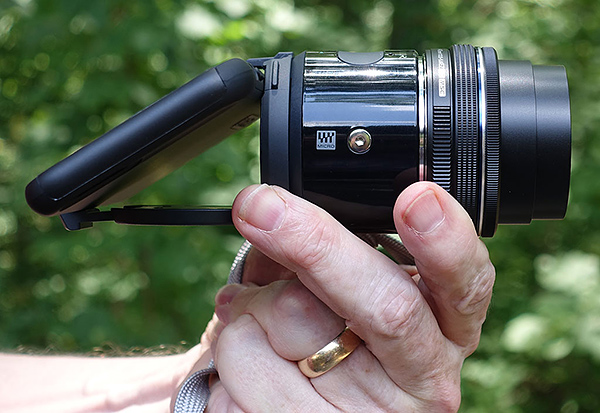
Dave E.: Yeah, but OTOH, the AIR was always just a niche product; it's not the sort of thing that'd sell in tens of thousands to lots of people. I'm not sure there could have been a market for something like that; at least not in enough numbers to be profitable :-/
Terry: Part of what I liked about the Olympus AIR was it was less complicated. I think most tech companies have a problem with simple solutions or clear explanations. But, FYI: I think they nailed it with their Starry Shot AF, which I've tested out a couple of weeks ago out on Eastern Long Island. ... Shooting stars is something I've always wanted to do—and they made a feature that makes it relatively easy to do. Here's a couple of shots I took, although the star trails is actually a different feature. Nevertheless, they don't really make a lot of buzz about it.
Dave E.: Ah yes, Starry Sky AF is pretty cool! I learned some about how it worked, and wrote it up in my most recent interview piece with Olympus, from my last trip there back in March.
Here's a thought from another direction about the long- or at least mid-term viability of the Olympus camera line: How much ongoing R&D do they need to continue to satisfy the needs of their well-defined user niche? (People wanting lightweight, rugged cameras with great IS and optics.) So playing devil's advocate, even if NewCo cut out all basic R&D, they could continue to make very nice cameras that'd be unique on the market in terms of satisfying the needs of the compact/lightweight/rugged/high-quality niche that they're in and that could sell in at least modest numbers for some years to come.
The bottom line for me is I'd be awfully sad to see the Olympus products wither and disappear. There's literally nothing else in the market that ticks all the boxes that they do.
• • •
What do you all think? Will Olympus (or whatever this new company will be called) find a way to succeed in the digital camera market? Are they destined for the history books, or will they find a way to overcome this challenging time? Sound off in the comments below!

